Your Waste Converted
At Compost Collective KC, your food waste is brought directly to the city’s largest, longest standing urban farm where it is lovingly turned into nutrient rich soil to become food once again. The Compost Hub at URBAVORE Farm is a blue print for our larger vision: a green city blossoming with decentralized composting hubs on numerous neighborhood farms. Working with multiple farms and community gardens, we can keep food waste processing close to the communities where it is produced and reduce the distance it is hauled, while simultaneously creating nutrient-rich food for those same communities. When you compost with us, you help make our bigger vision a reality!
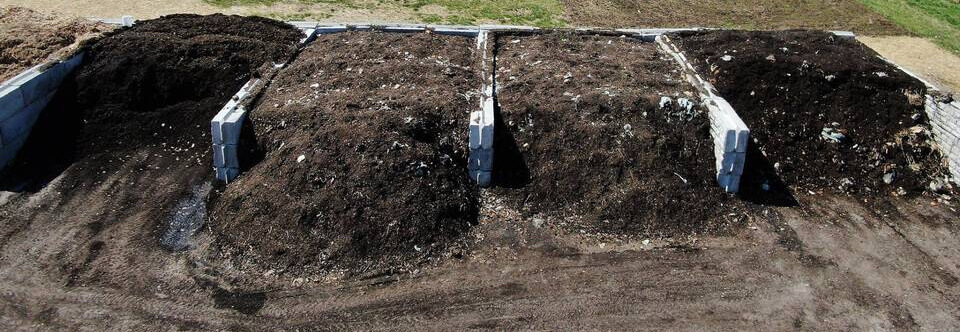
Trash To Treasure in 6 Simple Steps
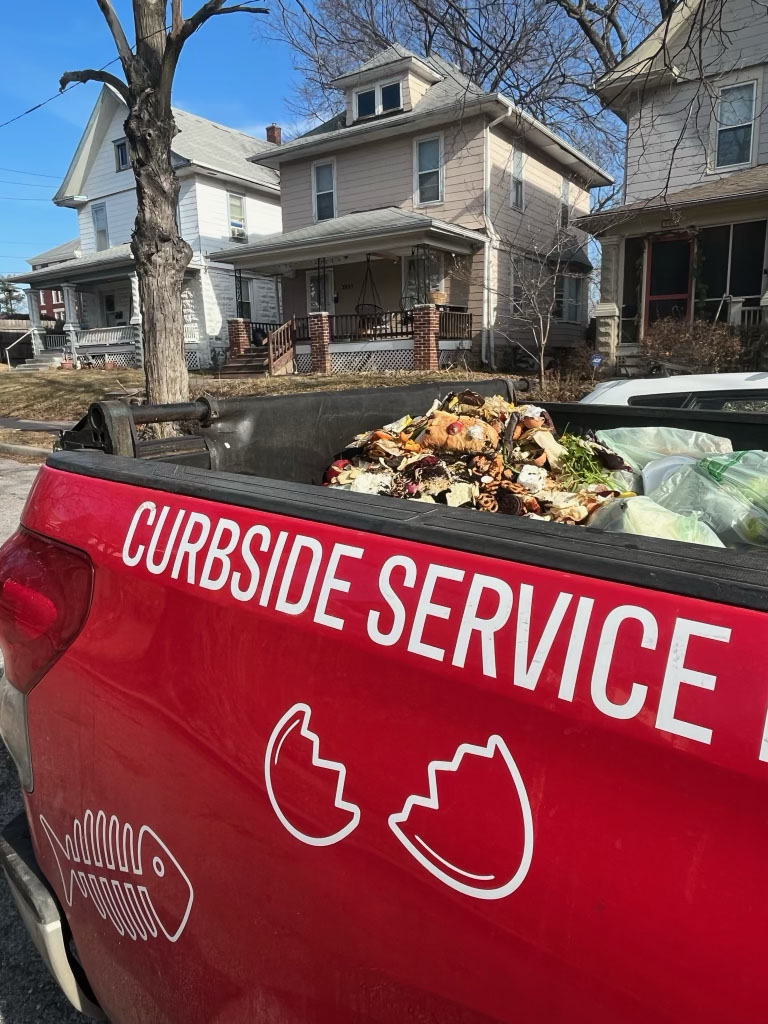
1. Pick it Up
Our team of Compost Superheros are on the streets 6 days a week, in all weather conditions, rummaging through your waste! When bins are frozen in sub-zero temps, our team is still spraying them clean and agonizing over every last coffee ground. All you have to do is place your scraps in your CCKC bin (instead of the garbage can) and set it out on your designated pick-up day, then we will do the rest!
2. Pile it On
Whether you drop off your compost in our free dumpster, or we pick it up at your curb, your food scraps’ first stop will be the Receiving Bay of our Compost Facility. Newly dumped food waste gets thoroughly mixed daily, with carbonaceous leaves + wood chips, to balance out the nitrogen-rich scraps and help absorb moisture. After all, food waste is over 80% water! This pile is considered our “fresh batch” which includes any materials received within the last 8 weeks. This is when our compost is at its hottest, reaching up to 150 degrees Fahrenheit! These high temps are essential for destroying any harmful pathogens like e-coli and salmonella (remember those eggshells you composted?) and sterilizing all types of weed seeds from collected yard waste.
- TARGET TEMPERATURE: 131-150 degrees Fahrenheit
- TIME IN PROCESS: 8 weeks
- CARBON ADDED: 3 - 4 parts carbon for each part of food waste
- ACTIVE MANAGEMENT: Daily mixing of materials
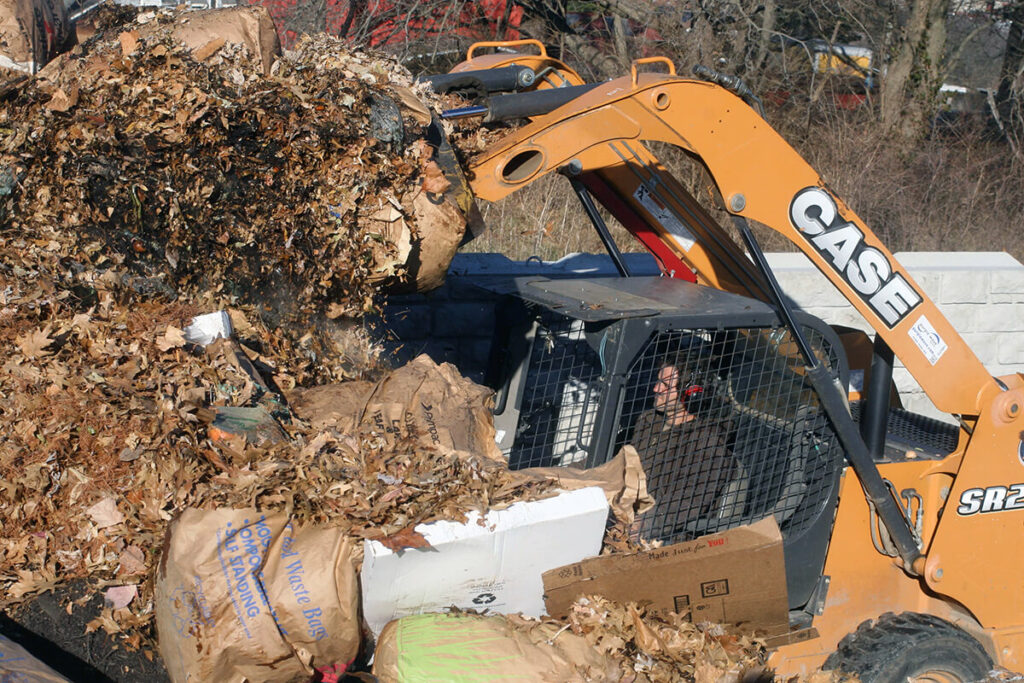
- TARGET TEMPERATURE: 120-140 degrees Fahrenheit
- TIME IN PROCESS: 8 - 16 weeks
- CARBON ADDED: Pile is capped with finished compost to control odors, flies, and other vectors (birds, raccoons, opossums, skunks, etc.)
- ACTIVE MANAGEMENT: Semi-weekly temperature monitoring, turning of pile to next phase.
3. Heat it Up
Once the Receiving Bay is full to the brim, we transfer our “fresh batch” over to the Active Composting Bay. The act of moving the compost pile introduces more oxygen, and gets the microbes inside the pile working faster. With more air, the active pile heats up again and can climb back up to 140 degrees! During this phase, the active pile can begin to emit odors. To keep potential smells from reaching our neighbors, we top off the pile with two inches of pre-made finished compost. This finished compost acts like a giant carbon filter, and absorbs any offensive smells.
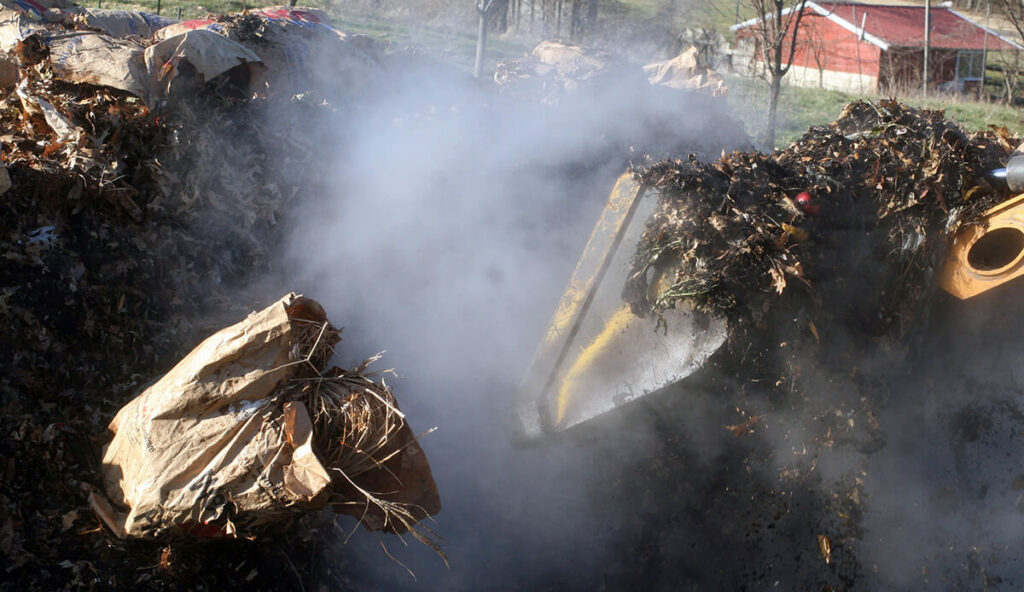
4. Simmer Down
When the active pile starts to cool off a bit, we move it to the Secondary Composting Bay. This pile is still very active, with temps between 100-120 degrees, but new microbes are moving in to break down the carbon and transform the food waste into a resource that can feed the earth without burning up the earthworms! The resulting compost is getting more and more diverse with life that will provide ideal conditions for plant growth. The strong smell from the active pile has all but simmered away, and the Secondary Composting Bay no longer requires a carbon cap.
- TARGET TEMPERATURE: 100-120 degrees Fahrenheit
- TIME IN PROCESS: 8 - 16 weeks
- CARBON ADDED: No carbon is added at this time.
- ACTIVE MANAGEMENT: Semi-weekly temperature monitoring, turning of pile to next phase.
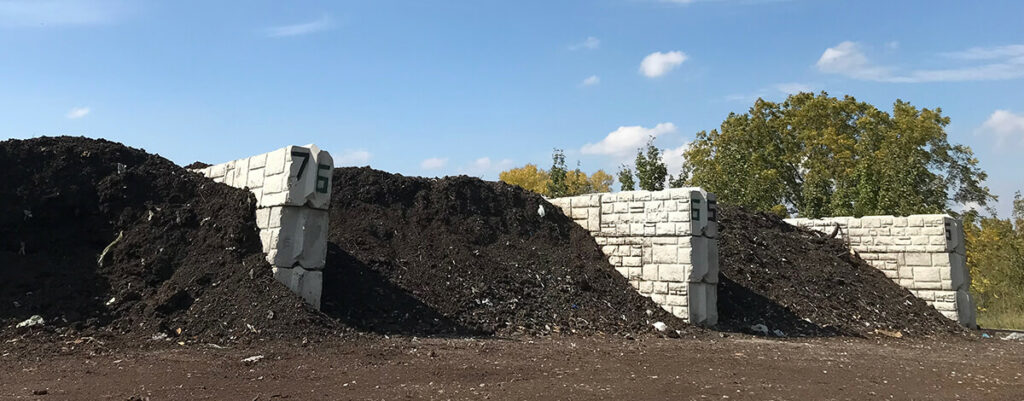
- TARGET TEMPERATURE: 80-100 degrees Fahrenheit
- TIME IN PROCESS: 8 - 16 weeks
- CARBON ADDED: No carbon is added at this time.
- ACTIVE MANAGEMENT: Semi-weekly temperature monitoring.
5. Worm Food
They say that when we die, we become worm food. When your food dies, it’s a bit more complicated. We have to release a lot of energy from that food before it becomes suitable for worms. That energy dump happened during the active and secondary phases of composting. Now your old food moves on to the Finishing Bay, where compost truly becomes compost. The pile continues to cool down during the finishing process, and becomes even more diverse in microbes. Furthermore, it finally feels fluffy and light, and has that notorious rich smell. The nutrients in this finishing compost are becoming locked in, and will no longer float up into the atmosphere or leach away into water.
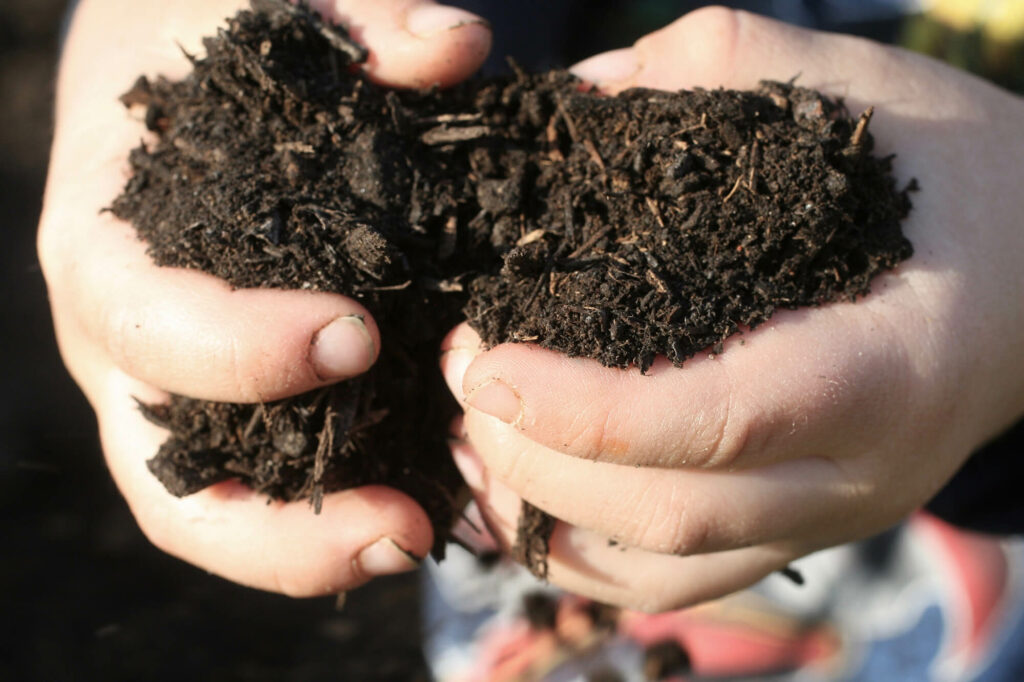
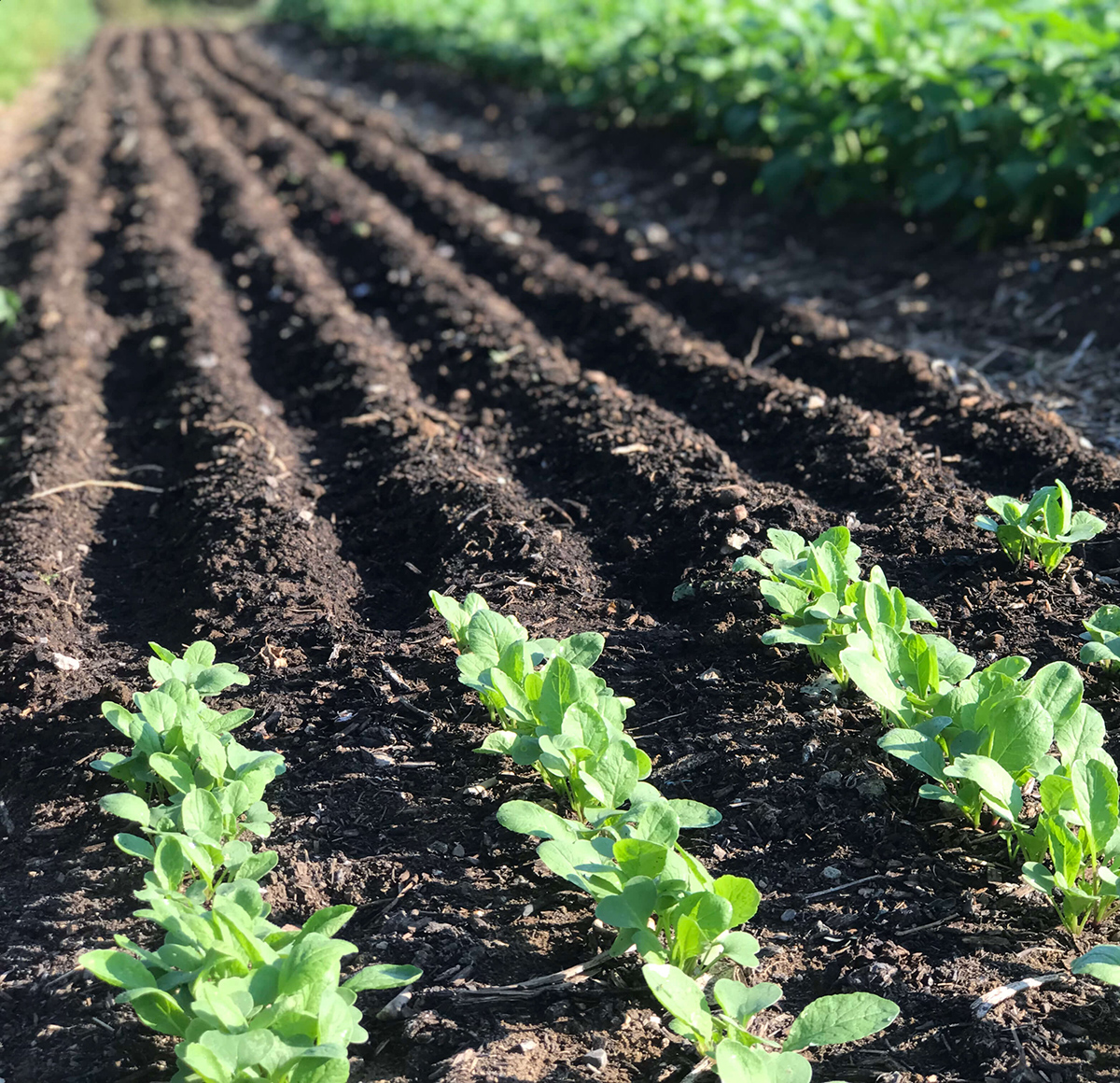
6. Regeneration
4 - 6 months after the composting process began, it reaches its end when the compost is spread onto Urbavore Farm’s fields. Urbavore uses your composted food waste to grow tonnage of organic vegetables for the KC community. Compost gets distributed on the farm’s growing beds as mulch, encouraging microbial diversity and preventing the sun from drying or sterilizing the soil. Over months and years, compost works its way deep into the soil via root pathways, worm and rodent tunnels, and the occasional farming hand tool. As it becomes part of the soil, the compost sequesters carbon and provides fertility to surrounding crops. It also improves the soil's ability to drain excess water and hold moisture during times of drought. The more compost we put on the soil, the better our plants grow, thrive, and ultimately feed our community. There’s nothing more satisfying than watching the process of your unwanted food scraps become a lush asparagus crop or a ripe heirloom tomato!
